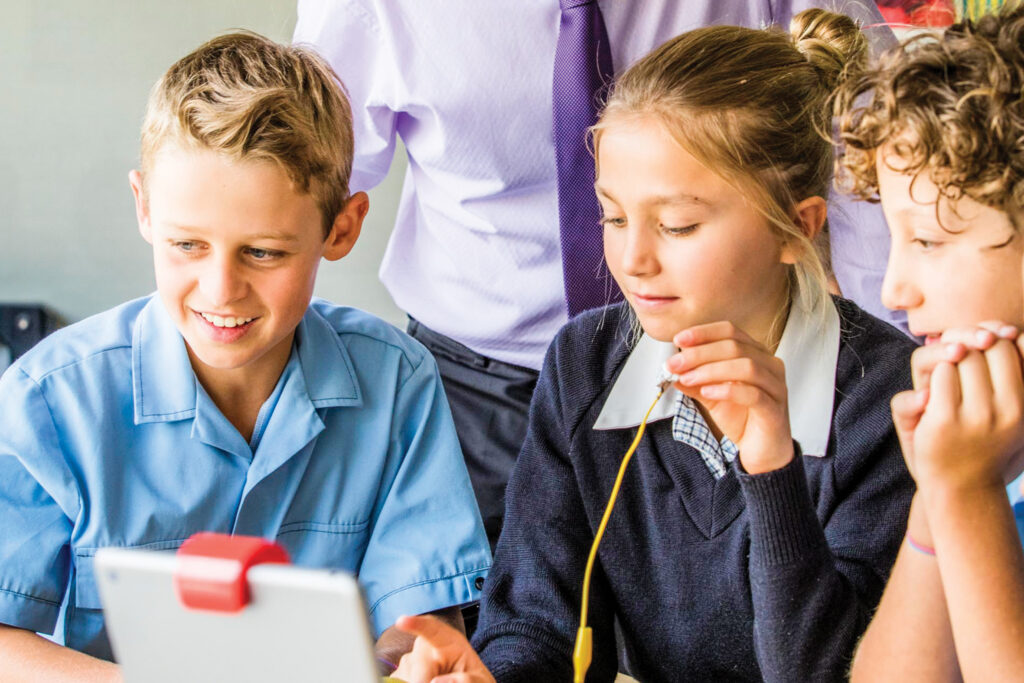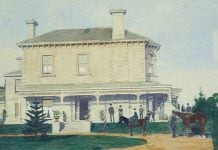The study of Design & Technology is popular at Melbourne Grammar School, with students learning the principles behind both everyday and world changing objects and ideas.
From the earliest days at Grimwade House, through to VCE, the understanding and application of the design process – design brief | research | design | test | produce | review – underpins the curriculum. Ideally, critical and creative thinking capacities are also built through the discipline.

Grimwade House: Introducing the satisfaction of problem-solving
At Grimwade House, students begin learning the foundations of the design process through Digital Technology, fondly known as DigiTech.
The journey begins in Prep, with students using the coding language of visual programming as the basis of learning about algorithms, problem solving and computational thinking. They perform relatively simple tasks, like moving a robot. In later year levels, the problems become more challenging and, increasingly, have an everyday focus. “Sometimes we try and find a digital solution to a real-life problem,” explains Max, Year 5.
“During Year 4, students research mazes around the world, design their own using a CAD program, and build them using our 3D printers,” explains Mr Matt Smith, eLearning Coordinator at Grimwade House. “By Year 6, students are asked to devise their own problem to solve using a digital solution. It could be something of interest to them, or a community issue. Either way, by this stage, their capacity to address the problem can be quite sophisticated.”
“DigiTech fosters creativity,” says Mr Smith. “Not everyone is going to come up with the same solution to problems. Plus, if something doesn’t work out, you can go back and fix it in DigiTech. This ‘tinkering’ begins students’ core understanding of the design process.”

Wadhurst: Discovering new capabilities and areas of interest
At Wadhurst, the focus of Design & Technology broadens to incorporate the use of new materials and new design challenges. “At Wadhurst, Design & Technology is a celebration of the type of technological society we live in,” says Dr Phillip Hingston, Design & Technology co-ordinator. “Boys are challenged to question how things work. We try to make it interesting to them, and relevant.”
“These years are about exposing students to as many new areas of knowledge as possible, so they can find out where their true interests and capabilities lie,” adds Dr Hingston.
Over the two years, problem solving methodology is addressed explicitly in a progressive manner. “We have to come up with new ideas ourselves. It’s challenging, but when you can overcome problems on your own you get a sense of accomplishment,” says Year 8 student, Bill Ren.
In Year 7, students are largely experimenting with new materials, like plastics, electronic components, wood and metal, and they learn how to use the tools to shape them. “The boys are essentially asking ‘what would happen if?’,” explains Dr Hingston. “Once students have mastered the basics of design principles – termed ‘design | build | improve’ at Wadhurst, projects include building a mouse-trap car.”
The theme for the classes in Year 8 is ‘communication’. Projects start with using a self-built key to send and receive Morse code, through to programming a microprocessor to perform increasingly complex tasks like setting the lighting of a pinball machine or driving a robot car.

Senior School: Viewing objects through a Design & Technology lens
Senior School students are able to continue their Design & Technology studies by investigating more advanced problems and using more complex techniques and tools. Melbourne Grammar offers three Design & Technology subjects at VCE level: Product Design & Technology, Systems Engineering and Visual Communication Design.
“At Senior School level, our Design & Technology curriculum is delivered within a real-life context,” explains Ms Claire Garnham, Head of Design & Technology. “There is a strong relationship between what our students do in the classroom and what happens in industry.”
In Year 10, students are exposed to a wide range of ideas and activities. They develop personal projects based on a broad design brief. This gives them the ability to make an informed choice as they move into VCE level subjects.
Some continue to focus on Product Design which, post-education, can lead to careers including architecture, product design and interior design, while others choose to specialise in Systems Engineering, which can lead toward roles in areas such as biomechanical, electronic and structural engineering. Visual Communication Design can lead to careers in advertising, graphic communication, web design and marketing.
“Design draws on a specific type of creative intelligence,” says Ms Garnham. “Some students who excel in this discipline are very practically focused – they enjoy building with their hands and thinking through problems to find solutions in highly creative ways. That said, we also have enthusiastic Design & Technology students who are high achievers in Mathematics and Physics. In either case, students are learning to see the world through a Design & Technology lens – one that emphasises the development of an object, and how it works.”
Year 10 student, Sam Negri, says: “As we’ve moved through the School, we’ve built our skills and capacity to apply them. I like that Design & Technology gives you the freedom to be quite creative in how you approach things. The environment in the new Geoff Handbury Science and Technology Hub is spacious and well-equipped. This means you are only limited by your imagination.”



